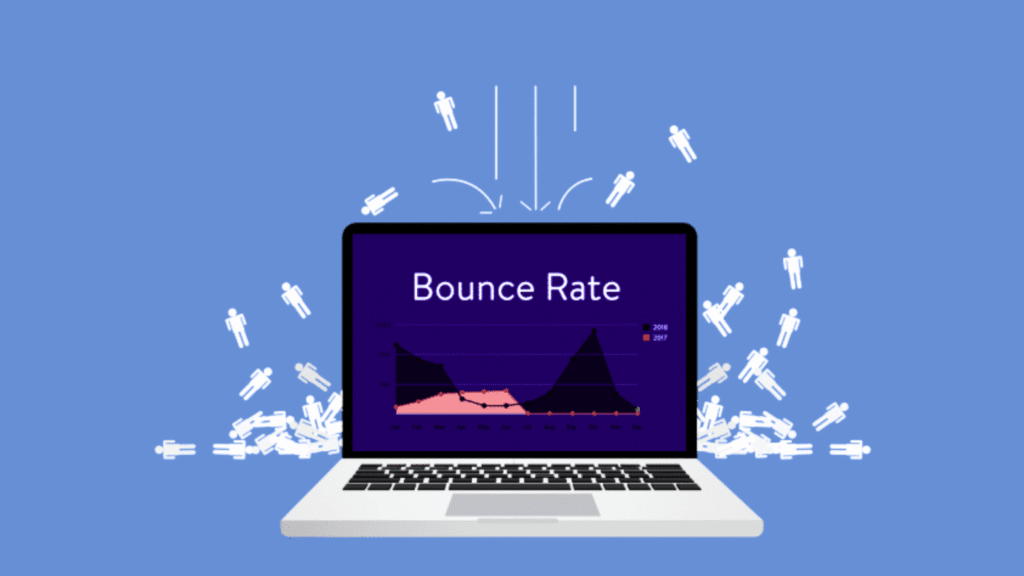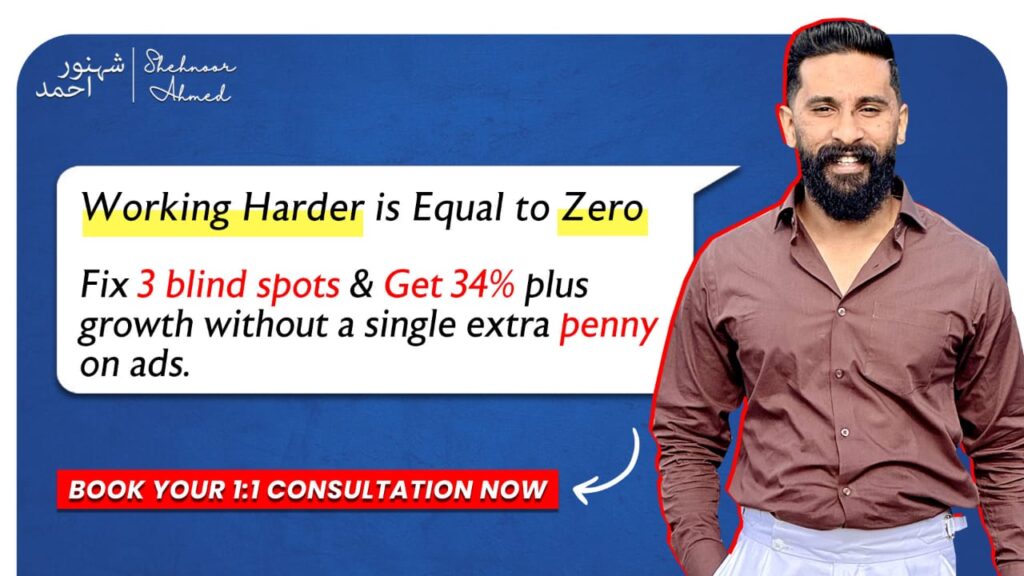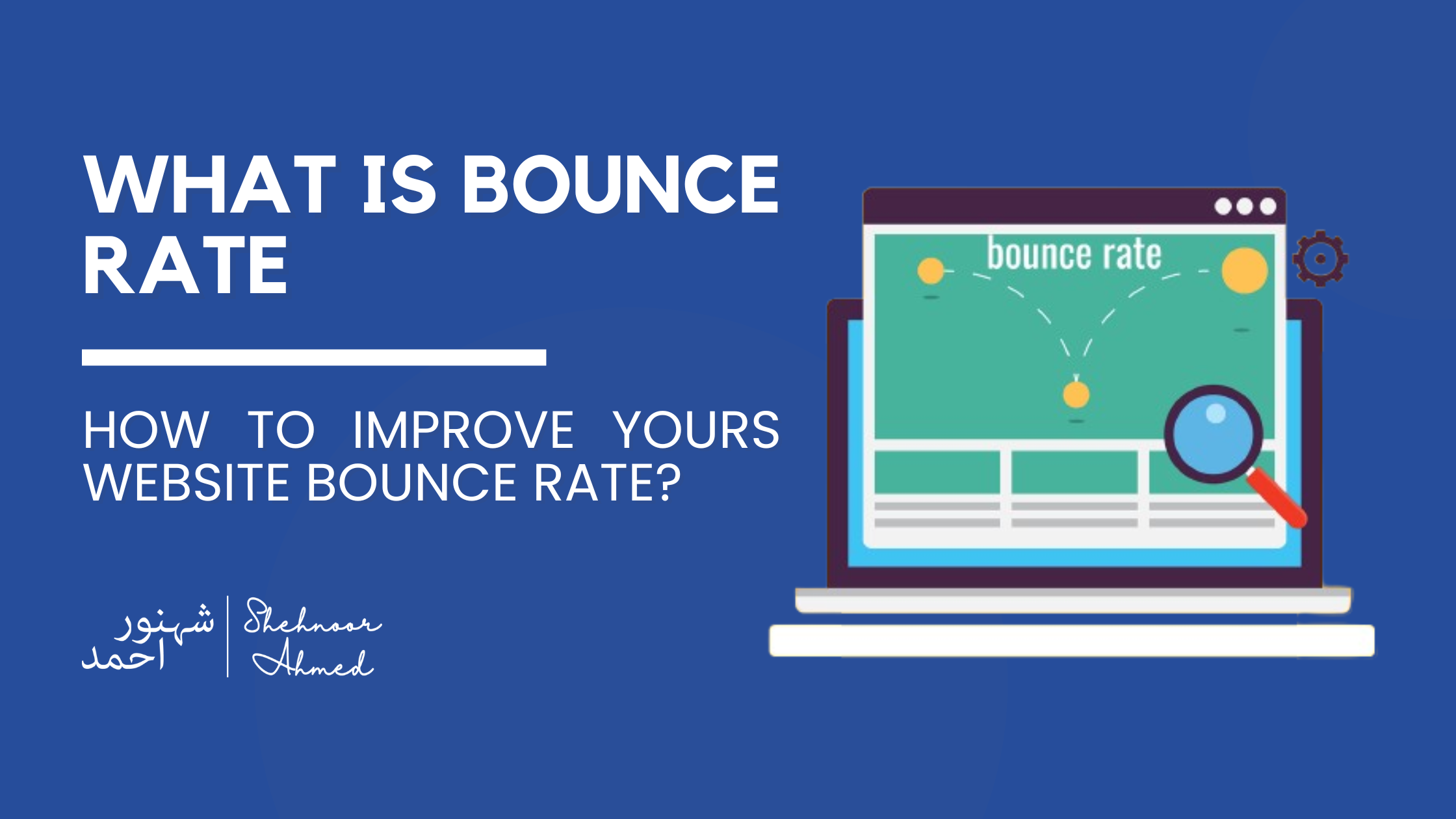Bounce rate tells you how many people visit a page on your website and then leave without clicking or doing anything else. They might just read a bit, decide it’s not for them, and close the tab.
In the latest version of Google Analytics (GA4), a session is marked as a “bounce” if it doesn’t include at least:
- Two page views,
- Ten seconds on the site,
- Or a conversion event like filling out a form.
It’s basically the opposite of engagement. So, if 70% of your visitors are interacting with your site, the bounce rate is the remaining 30%.
Why Bounce Rate Matters in 2025

With so much content available online, users are quick to leave anything that doesn’t immediately grab their attention. That’s why bounce rate is more important than ever—it shows whether your site delivers what people are looking for.
If your bounce rate is high, it could mean your content isn’t matching user intent, or your site is hard to use. If it’s low, people are sticking around and doing something meaningful.
What Makes Visitors Leave So Quickly?
Here are some of the usual suspects:
- Slow page speed – If it takes too long to load, people bounce.
- Misleading titles – If your headline says one thing but your page says another, users won’t stick around.
- Poor layout or navigation – Confusing menus or cluttered pages push people away.
- No next step – If users don’t know where to click next, they’ll just leave.
- Too many popups – One is fine. Several? People are gone.
Bounce Rate vs. Engagement Rate
Let’s clear this up:
- Bounce rate is the percentage of people who land on a page and leave without interacting.
- Engagement rate is the percentage of people who do engage—whether that’s clicking, scrolling, or spending time on the page.
Both matter. Together, they paint a full picture of how your audience is behaving.
Also read: Ad Agencies Targeting Chatgpt Users to See Ads in Chatgpt Responses
How to Lower Bounce Rate (Without Tricks)
Want to keep people on your site longer? Here’s how:
- Speed things up – Compress images, clean up code, and test your mobile version.
- Give people what they came for – Answer their questions fast and clearly.
- Keep design clean – Simple layouts are easier to trust and use.
- Use internal links – Point to helpful related pages so users keep exploring.
- Place CTAs naturally – Guide users with buttons or links that make sense contextually.
Mobile Experience Can Make or Break You
Today, most people browse on their phones. If your site isn’t mobile-friendly, expect a high bounce rate.
Tips to improve mobile UX:
- Make buttons tappable – Nobody likes pinching and zooming.
- Avoid horizontal scroll – It’s awkward and frustrating.
- Keep menus simple – Compact and collapsible navigation works best.
- Prioritize speed – Mobile users are even more impatient than desktop users.
Content Tips That Keep Visitors Around
Engaging content isn’t just about good writing—it’s about how it’s delivered:
- Start strong – Hook readers with a powerful intro.
- Use headings – Break text into easy-to-skim sections.
- Add images and visuals – Not just for decoration—use them to explain or enhance.
- Answer common questions – Anticipate what your readers want to know.
- Write like you’re talking to someone – Friendly, clear, and helpful wins.
Tools You Can Use to Check and Fix Bounce Rate
Here are some tools that make diagnosing bounce issues easier:
- Google Analytics 4 (GA4) – Check bounce rate and engagement across pages.
- Hotjar or Microsoft Clarity – See where users click, scroll, or get stuck.
- A/B Testing – Try different layouts or CTAs to see what works best.
- PageSpeed Insights – Find out what’s slowing your site down.
Real Help for Reducing Bounce Rate
If your numbers aren’t looking great, it’s probably time for a deeper look. That’s where I come in.
At Shehnoor Ahmed, I work with business owners to:
- Spot the weak spots in your site’s structure or content.
- Improve your site layout and page load time.
- Align your content with what your audience is actually searching for.
- Guide visitors toward actions—whether it’s booking, buying, or learning more.
I don’t believe in vanity metrics. I believe in fixing the real issues that stop your site from converting.
Quick Comparison: What Good vs. Bad Pages Look Like
Let’s Fix Your Bounce Rate Together
You’ve worked hard to get people to your website—don’t lose them at the door.
If your bounce rate is high, I can help you figure out why and show you how to fix it. Whether it’s speed, structure, messaging, or something else, we’ll get to the root of the problem and start turning visitors into customers.
Ready for a proper bounce rate fix?
Reach out today for a free website audit.

FAQs
What is a good bounce rate?
It depends, but under 50% is usually a solid goal for most websites.
Can a high bounce rate ever be okay?
Yes. If a user gets what they need quickly—like a phone number or address—it’s still a successful visit.
Will bounce rate affect my SEO rankings?
Not directly, but poor engagement often correlates with lower rankings because search engines care about user experience.
What if my bounce rate suddenly went up?
Check for recent changes—design tweaks, new content, or traffic sources. Even a broken element can push users away.




